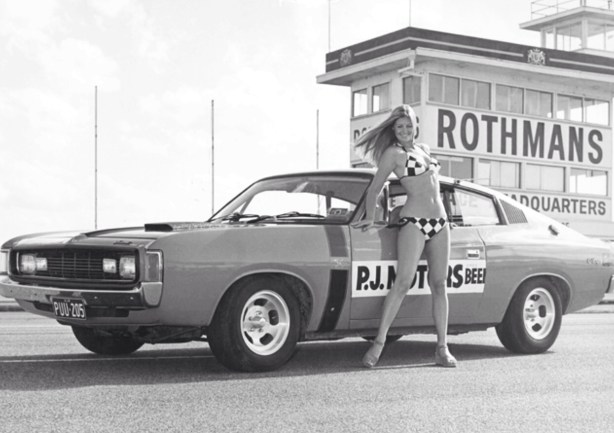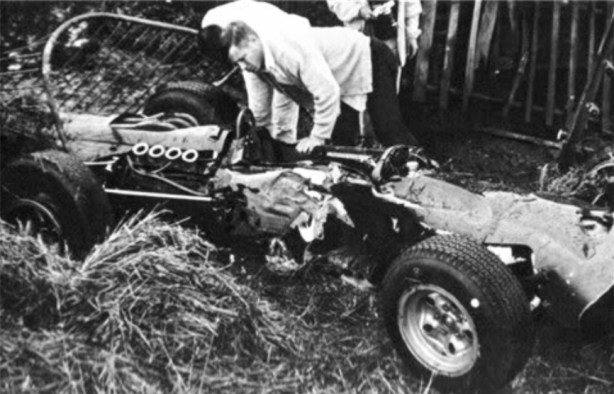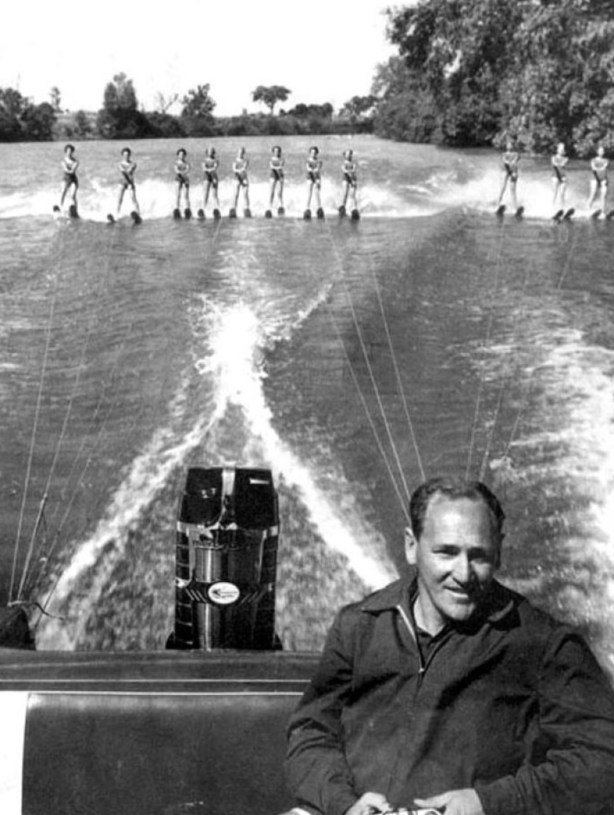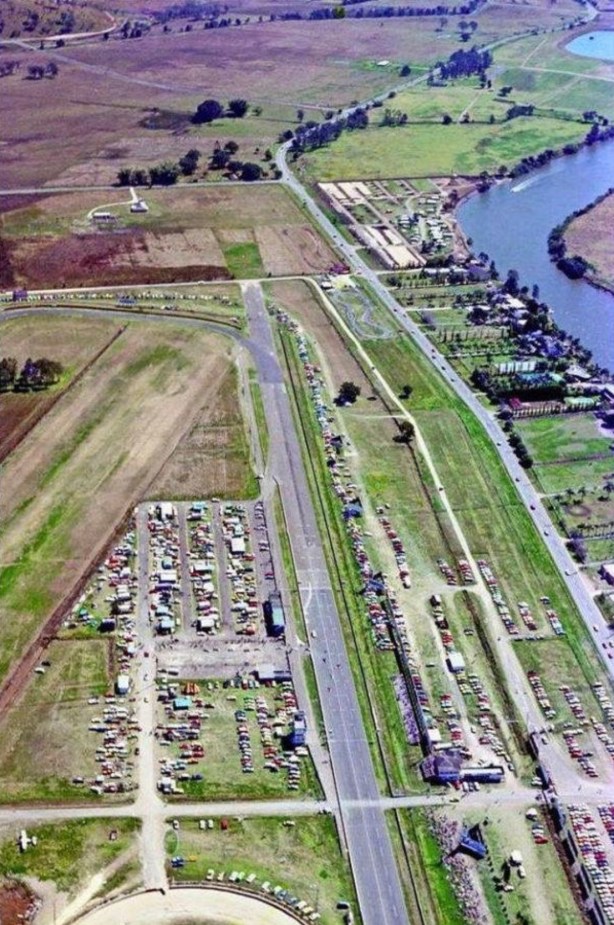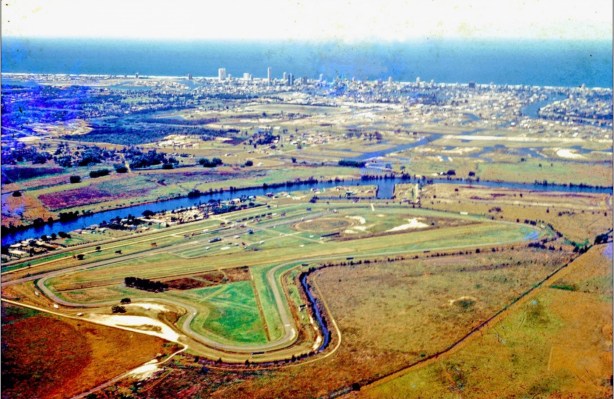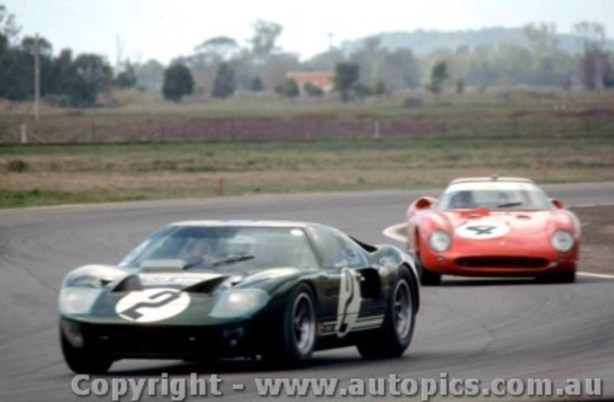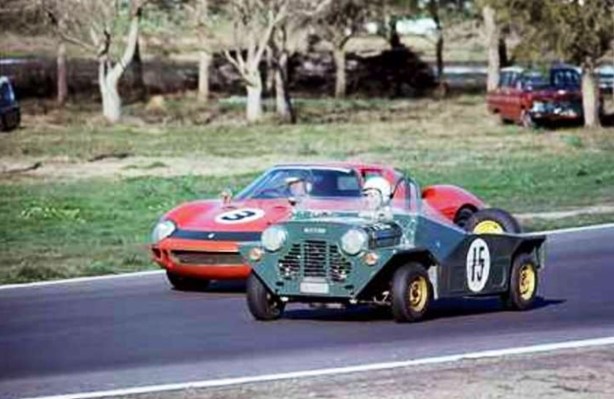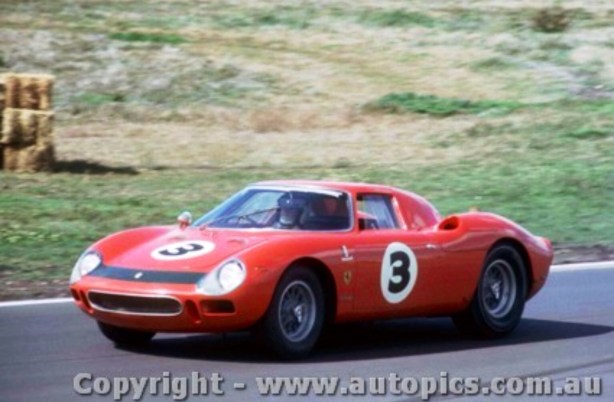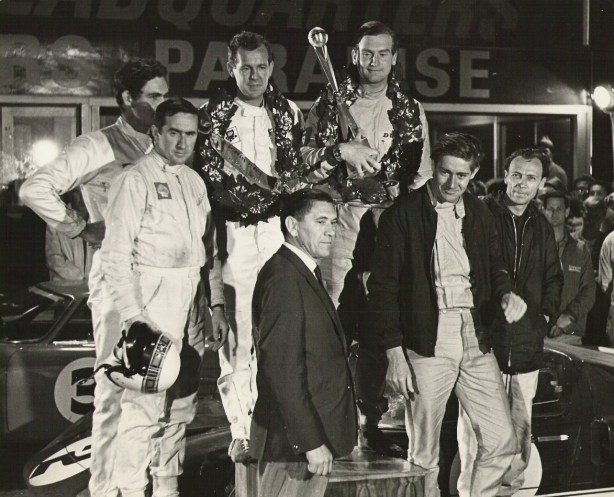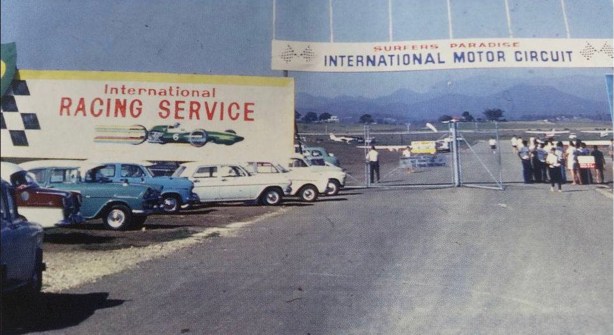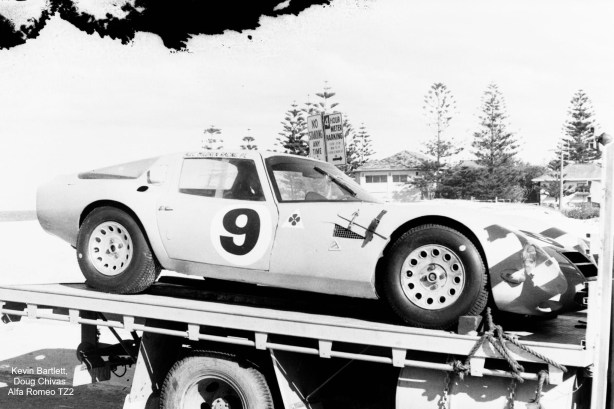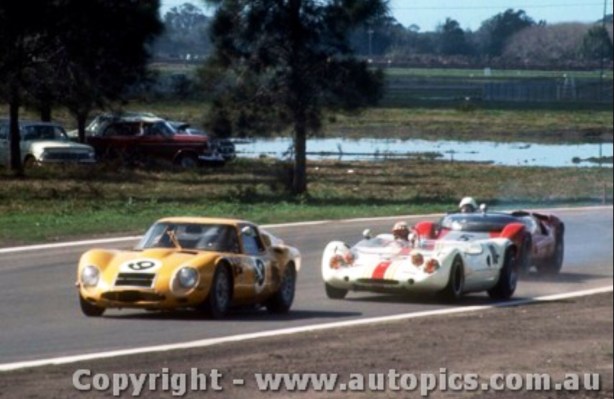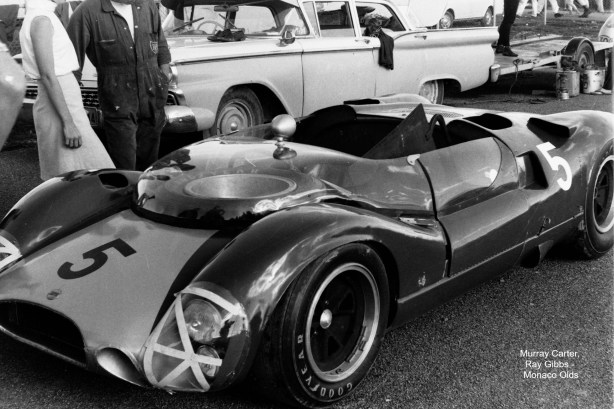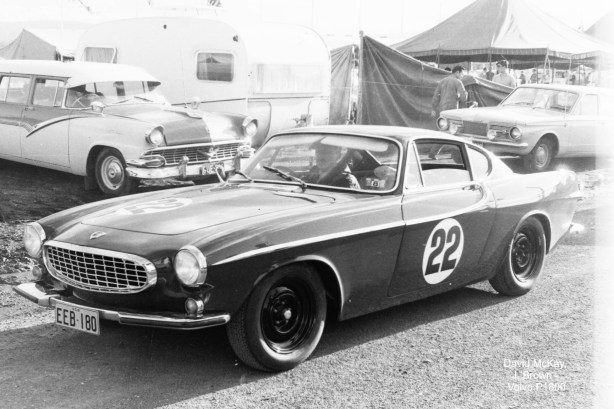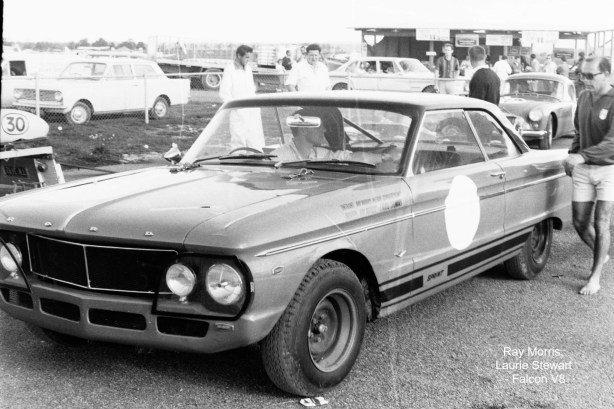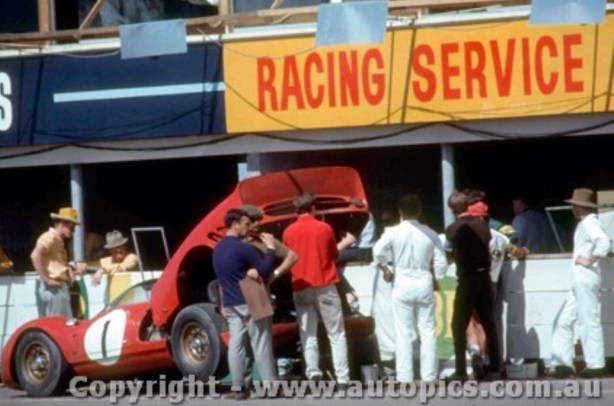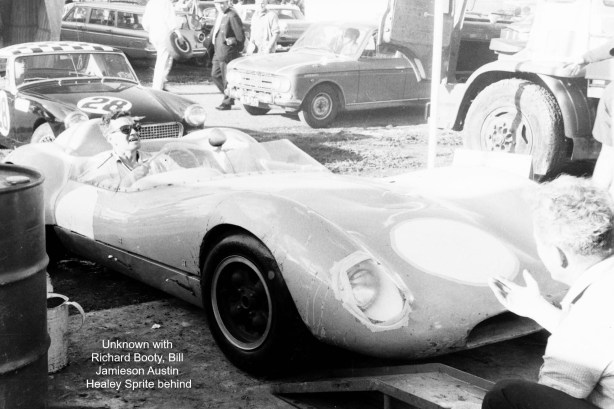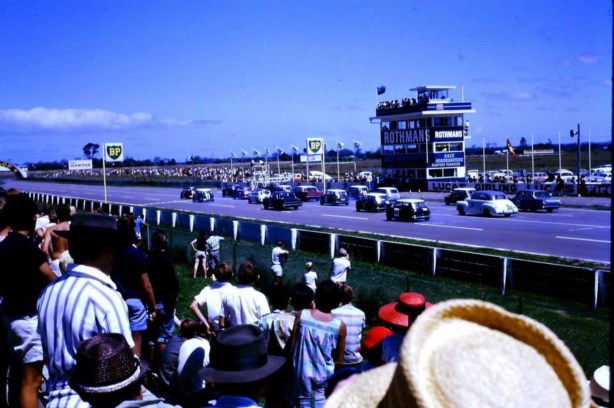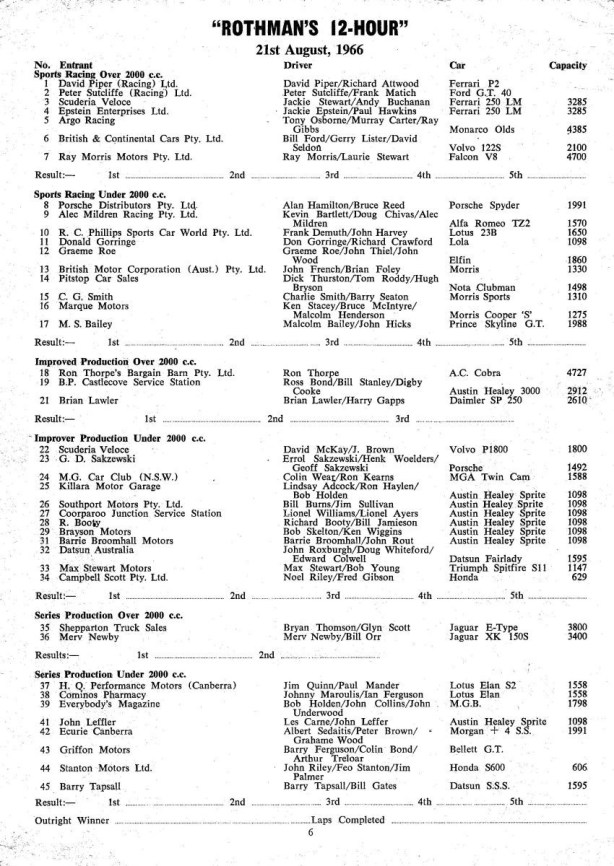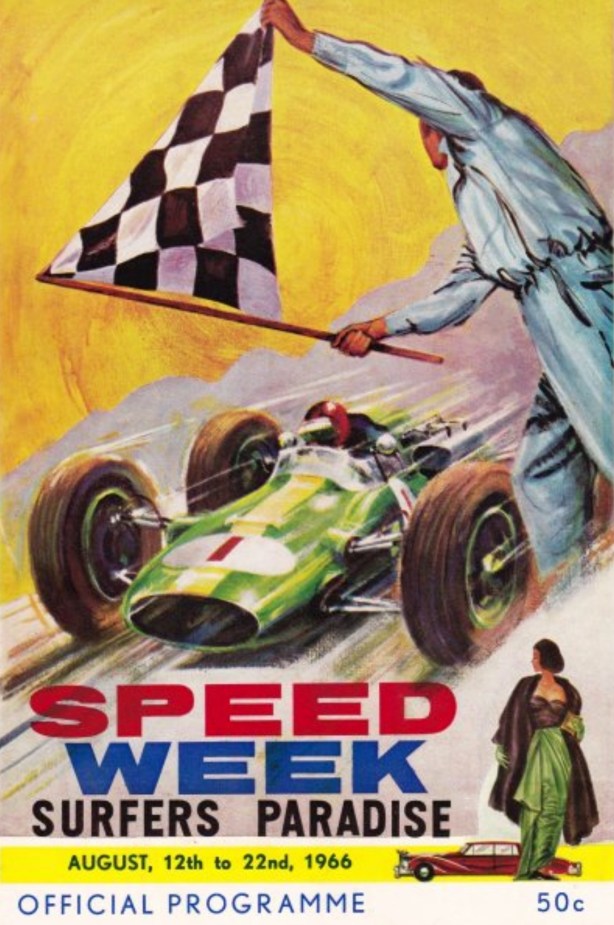Cathy Ford looking all pert and perpendicular in a Paula Stafford bikini, a mighty fine chequered flag design it is too. The car is a Valiant Charger R/T (road/track) at Surfers Paradise International Raceway in 1972’ish…
Once upon a time Australia had a motor industry. It was largely owned by the US Big Three, Chrysler was the smallest. Based in Tonsley Park outside Adelaide, the company punched well above its weight, the product, especially the Hemi-six cylinder engined cars were good in the context of the times.
The Big Three’s pony cars in 1971-72 comprised Ford’s four-door road Falcon GT 351 and Bathurst winning GTHO 351 variant, General Motors Holden’s mid-size 202cid six-cylinder road Torana GTR and Bathurst winning GTR-XU1, and the 265cid-six powered road Charger R/T E37 and Bathurst E38 in 1971, and E48/49 in 1972.
These amazing Australian designed and built road cars – in world terms they were fast and acccomplished – were fundamentally built to win Series Production races, especially the annual Bathurst 500 bash. Win on Sunday, Sell on Monday, it was that simple for the snappily dressed marketing men and their whiteshoe, sales foot-soldiers.
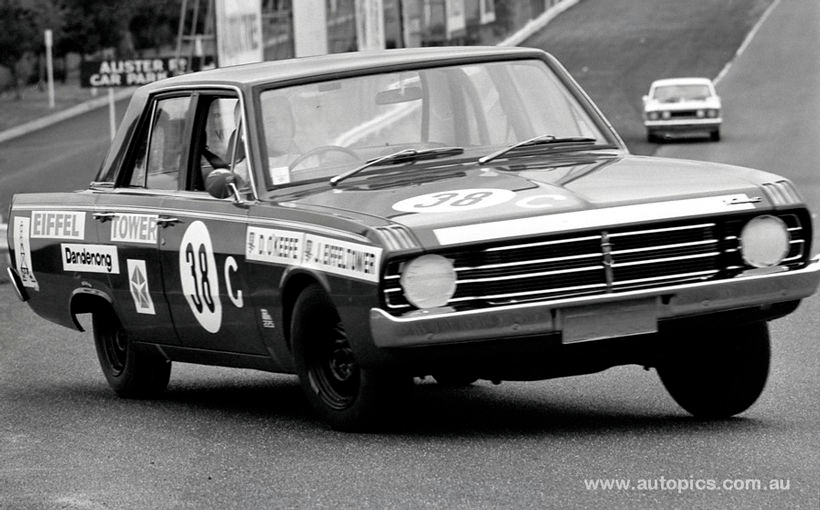
Valiant put a toe in the competition water with mildly tuned ‘Pacer’ variants of their four-door VF and VG family man machines in 1969-70. Then they got serious with the new shortened 105 inch wheelbase Charger which was released two months after the mainstream 111 inch VH Valiant sedan in 1971.
The American styled VH suited guide-dog-owners, it’s big arse, cavernous overhangs, high waisted looks and narrow track weren’t a patch on the looks of the contemporary Holden HQ, Falcon XY or XA.
When Chrysler Oz CEO David Brown realised what a mutt his new car was going to be, he bundled up a tiny-budget and built a two door coupe, the design of which was led by Brian Smyth at Tonsley Park. It had to plug a hole in his range and grab some halo-effect for his four-doors.


And what a horn-bag Smyth and the Chrysler International Design Studio, under Bob Hubbach, came up with. Charger was an immediate sensation when released in August 1971. The best bit of the Valiant, its front, was retained and otherwise the team crafted a low, squat, muscular, sexy machine that still looks great from every angle.
With Elle McPherson looks at an affordable price it was a sales smash aided and abetted by a brilliant marketing campaign. Hey Charger! was on everybody’s lips, young or old, male, female or confused. Winning Wheels magazine’s coveted Car of The Year award in ’71 was the cherry on the cake.
The range went from the poverty-pack 215cid, drum braked, three-on-the-floor Charger to the fire-breathing race-bred 265cid – a bored-out 245 Hemi – 1971 E38 280bhp @ 5000rpm and 1972 E49 302bhp @ 5600rpm R/T machines of interest to us.
For a while 70% of all Chrysler sales were Chargers, but they were far from niche. With a big back seat and a boot you could fit granny in, they were legit four-folk-family-cars. Read Mel Nichols’ account of what a great drive these competition bred Chargers were on the road; https://www.classicandsportscar.com/features/chrysler-valiant-charger-australian-odyssey
Chrysler competition chief, engineer John Ellis put together a strong development team in the Pacer days which included 1970 Gold Star champion single-seater racer, Leo Geoghegan who raced the cars and acted in a consulting capacity. Another sportscar/single-seater racer/mechanic, Ian Cook, a Chrysler employee was key too. This group, and others, concocted a potentially race winning car, the only missing ingredient in the formative stages was a four-speed gearbox…


The A84 Track Pack option included a very direct 16:1 ratio steering box, Sure-grip LSD, a choice of tall 3.23:1 and short 3.50:1 diff ratios, light 14×7 R.O.H. cast alloy ‘Dragmag’ wheels and a huge 35-gallon tank with twin-fillers.
On paper, the big-Val had Bathurst shot-to-bits but the lack of a four-speed box was a big shortcoming; there was no Oz four-speeder available at the time, a situation rectified in 1972.
While it looked the goods, there were other shortcomings, as Mark Oastler outlines. “The Charger was built on a relatively short 105-inch wheelbase, which magnified the ‘see-saw effect’ of dynamic weight transfer from front to rear, resulting in excessive squat under acceleration and forward pitch under heavy braking.”

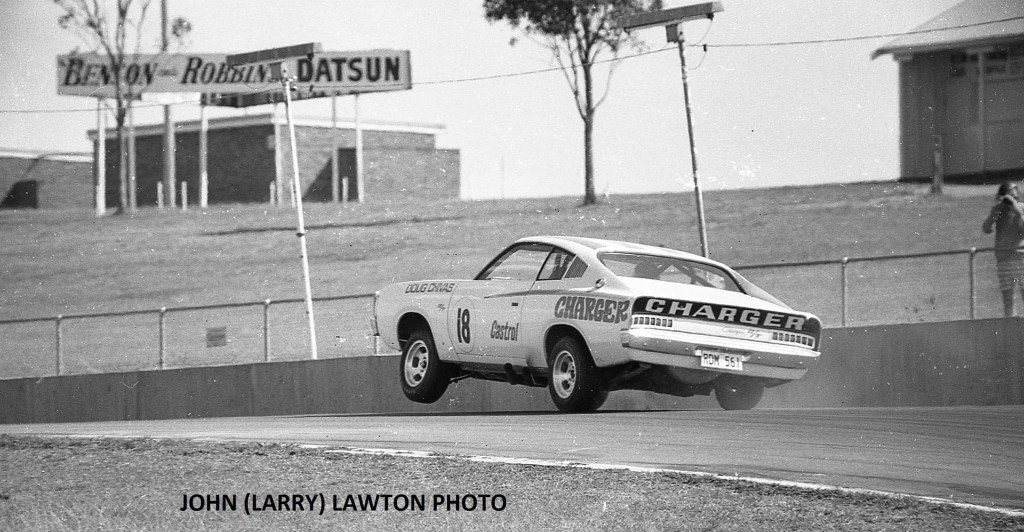
“This was not helped by the high location of the big long-range fuel tanks fitted to the Bathurst cars. The VH Valiant’s bulbous bodywork ended up being more than 100mm wider than that of the VF/VG ute-based development mules, which added to the R/T’s lateral inertia and tendency to understeer in hard cornering. The Charger’s wheelbase was also quite short relative to its track. This wheelbase-track ratio created a car that was very responsive to directional change, but was twitchy and nervous at high speeds.”
The Charger’s track was similar to the GTHO but its wheelbase was six-inches shorter than the big Roaring Ford. It wasn’t stable on high speed Mount Panorama but was better suited to shorter, twistier tracks. The Chargers were dominant in NZ production racing for years, a status never accorded them at home.
The 11-inch non-power assisted ventilated front discs and calipers (which flexed badly) were marginal on track too. Ford’s similar challenges with the beefy 351 Cleveland powered HO were met late in the 1971 piece with Ferodo’s trick DP11-103 pads.
Oastler quotes Leo Geoghegan as saying that the Chargers could have beaten the Toranas in ‘the six-cylinder class battle’ and applied greater pressure on the HO’s had Chrysler sorted its front-disc problem. A set of pads was only good for 60 miles if given a hard workout.

In 1971 expectations were high after Doug Chivas won a 100 lap enduro at Oran Park a fortnight before Bathurst. While it was a great drive, Chivas was advantaged by Colin Bond’s HDT XU1’s race-long gear selector problems…the works HO’s were absent too.
With vastly inadequate Bathurst preparation: simulations to determine fuel consumption, brake and tyre life etc, Geoghegan’s Top 10 Q8 was great – quickest of the Class D cars including the XU1s – but was still six seconds off Moffat’s GTHO Phase 3 pole.
Moffat won by a lap with Geoghegan’s Charger seventh outright and second in class behind Bond’s HDT XU1. Impressively, eight of the 10 Chargers that started, finished. Geoghegan’s post-race list of shortcomings included tyre wear, fuel consumption far greater than that anticipated and brakes…
In the later rounds of the 1971 Australian Manufacturers Championship (Manchamps), Chivas was third at the Phillip Island 500K, while Geoghegan was second to Moffat’s HO in the Surfers Paradise 250 – ahead of the two LC XU1s of Brock and Bond – with Chivas sixth. Progress was being made.


Chrysler’s response for 1972 was the 302bhp @ 5600rpm E49 Charger variant…fitted with Borg Warner’s new four speed gearbox, the more aggressive cam-profile was possible thanks to a better set of ratios which could exploit the peakier power delivery.
Just as in 1971, the E49 was short on Bathurst development, in part as a result of the Supercar Scare, see here for chapter-and-verse on that important bit of Australian Motor Racing History: https://primotipo.com/2018/04/12/holden-torana-gtr-xu1-v8/
A byproduct of the Supercar Scare was Chrysler’s withdrawal from motor racing with factory cars, an incredible decision really after all the clever development and homologation. The better call would have been to contest that years Manchamps and then pulled the plug; but Chrysler was in big financial strife globally.
Noel Hurd raced his E49 to fifth in the first round of that championship, the Adelaide 250 in August, while at Sandown, the traditional Bathurst curtain-raiser, the two cars raced by Victorians, Tom Naughton and Lawrie Nelson failed to finish.
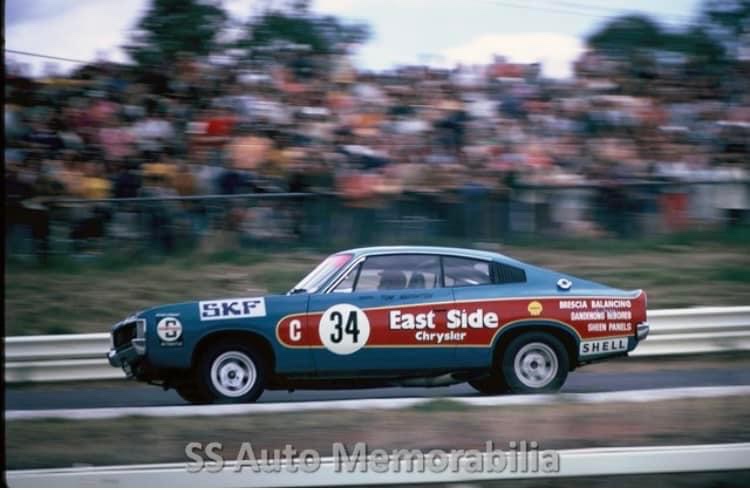

Off to Bathurst, Geoghegan was again the quickest of the Chargers at Mount Panorama, qualifying sixth. Again Moffat was on pole in an XY GTHO, but this time the margin to the E49 was 3.3 seconds. Leo led for a while early in the race but a faulty starter motor, loose battery lead and misfire late in the race ruined what could have been a good run. Geoghegan was fourth in the race won by Peter Brock’s GTR XU1, with John French’s GTHO second, with the Doug Chivas/Damon Beck E49 the best of the six Chargers entered, in third.
Tom Naughton was sixth at the Phillip Island 500K, while Leo was sixth in the Surfers Paradise 300. Chrysler placed fifth in the the Manchamps behind the GTHO, XU1, Ford Escort Twin-cam and Mazda 1300.

With the end of Improved Production and Series Production in 1972, and adoption of Group C as the formula to which the Australian Touring Car Championship and Australian Manufacturers Championship were run in 1973, a group of New South Wales and Victorian Chrysler dealers supported the construction of a Group C-spec Charger built by ace engineer/mechanic, John Sheppard at his Monaro Motors workshop in Melbourne. It was to be raced by Leo’s brother, four-time Australian Touring Car Champion, Pete Geoghegan.
Pete finished sixth in the ATCC in this quick, often forgotten car, but switched camps to Ford for the Manchamps. Successfully so, he co-drove Moffat’s factory XA 351 GT Coupe – FoMoCo’s response to the two-door Monaro and Charger – to victory at The Mount. This Group C Charger is beyond the scope of this article but is a good one to pick up soon with some input from Sheppo, who is still razor sharp.

Etcetera…
In Chrysler’s own words above, “You’re watching Charger’s Hemi/Weber Six Pack during a dyno endurance test. After 480 hours at both ends of the rev range, it’s running red hot at peak revs for longer than it ever would on road or track. The Six Packs an unbelievable mill. But don’t get the idea it’s just a 265 cube Hemi with three double-barrel Webers bolted on.
The whole engine’s been tuned to the Webers. In fact, we flew a car (a VG Pacer driven by John Ellis from London to Bologna) over to the Weber factory in Italy. Breathings been freed up with a high overlap camshaft, bigger valves and tuned length extractors. And the crankshaft, conrods and valve springs have been shot-peened for high-speed strength.
But there’s more to a Six Pack Charger than just a great engine. The E37 Street version offers dual disc clutch, close ratio gears, 20:1 steering, 3:23 diff and pancake air-cleaners to pick up bottom end torque. The E38 Track Pack version picks up compulsory alloy wheels and special engine, brake and suspension mods. All of which make it ready to roll straight on to the track.
Your Chrysler/Valiant dealer has the Six Pack systems to make you believe in the unbelievable. And at Charger prices, you can’ attord not to.
CHRYSLER. GREAT IDEAS IN MOTION. BELIEVE.”

Laurie Nelson’s Group C Charger E49 being harrasssed by an LJ GTR XU1 at Shell corner, Sandown circa 1973.

Following the privateer theme – these cars were very fine cars for those on a tight budget – here is Tim Slako’s car at Wanneroo Park circa 1971.
Credits…
Chevron Publishing, ‘Australian Touring Car Championship’ Graham Howard and Stewart Wilson, ‘VH Valiant:The R/T ‘Super-Charger’ that never made it’ Mark Oastler, Lynton Hemer, SS Auto Memorabilia, Graham Ruckert, Chrysler Car Club, Julian Edwards, John Lawton, Laurie Nelson

Tailpiece…
The ROH aluminium alloy ‘Dragmag’ was adopted by Chrysler for the Charger programme. It was made across town in Finsbury by Rubery Owen and Kemsley Pty Ltd one of the local subsidiaries of Owen Organisation/Rubery Owen, a global automotive UK based transnational of which the Owen Racing Organisation/BRM (British Racing Motors) F1 team was a part.
I wondered whether Chrysler inspired the design of the fabulous Dragmag – easily my favourite Oz Alloy of the period – for the Charger programme but Moff ran the wheels on his famous Boss 302 Trans-Am in 1970, and the ad above was in the June 1970 issue of Wheels so they were on the market at the time Charger was being developed.
Obiter…

It transpires – the power of internet searches – that the factory Rubery Owen Kemsley took over in 1946 dates back to WW2. After the British retreat at Dunkirk in 1940 the Australian Government decided to decentralise ammunition production away from the more populous eastern seaboard cities, Adelaide’s Finsbury/Hendon were two such locales.
The Finsbury ammunition factory was established on a massive 50acre/123ha site and commenced production in February 1941. It comprised about 20 buildings where up to 4000 people made cartridge cases and shell fuses for munitions, but not the explosives themselves. The castings and arms cases were sent by rail on a new spur line from Woodvile to Finsbury, to the Salisbury Explosives Factory for filling and assembly.
The factory is now a tyre warehouse.

Finito…
